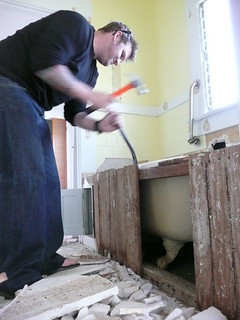Is This Repair/Maintenance or Capital Expenditure?
The account you get to write the check from matters for several reasons.
 Property investors who deal in residential property might not be as familiar with terms like ‘CapEx’ (that’s Capital Expenditure) than those who deal in commercial structures, but knowing the difference between CapEx and Repair/Maintenance can help you figure out how to maximize the impact of your money.
Property investors who deal in residential property might not be as familiar with terms like ‘CapEx’ (that’s Capital Expenditure) than those who deal in commercial structures, but knowing the difference between CapEx and Repair/Maintenance can help you figure out how to maximize the impact of your money.
Capital Expenditures vs. Repair/Maintenance: The Rules
A ‘Capital Expenditure’ is an acquisition or upgrade that permanently increases the value of an asset. Because a CapEx adds to the ‘asset’ column of your balance book, it’s commonplace for an investor to capitalize the costs of that asset over several years, following the depreciation rules laid out in the Federal Tax Code.
In contrast, any expenditure that serves to restore or maintain, rather than increase, the value of an asset cannot be CapEx — it’s simply repair or maintenance. R/M costs cannot be capitalized; they are simple placed directly in the Expenses folder. The significant exception: if you spend money to “ameliorate a material condition or defect” of the property, that can be considered CapEx.
Examples
Capital Expenditures include (but are not limited to):
- Adding a new property to your portfolio,
- Replacing the roof, flooring, or major appliances of an existing property,
- Installing a new central heating and/or air conditioning system,
- Completely overhauling the electrical or plumbing within a house, or
- Some ‘wide-area’ improvements such as repainting each of several houses in your portfolio can count as CapEx as well.
Repair/Maintenance includes (but is not limited to):
- The standard-issue cleanup, repaint, and other move-out processes,
- Replacing a single sink, toilet, or other significant fixture,
- Deep-cleaning/polishing the flooring of a house, or
- Having the locks replaced.
Easy Ways to Know the Difference
- The most basic rule that separates CapEx from R/M is this: If you’re going to have to do it again within a year or two, it’s R/M. If not, it’s probably OK to call it CapEx.
- If your expenditure “keeps” property functional, it’s probably R/M; if it “puts” property in better condition, it’s probably CapEx.
- If you’re restoring the property to a “usable” condition, it’s probably R/M; if you’re restoring the property to “like new,” it’s probably CapEx.
- If you’re “protecting” the existing property, it’s probably R/M; if you’re “adding” components to the property, it’s probably CapEx.
Ultimately, if you’re not sure how to qualify a particular expense, the ultimate resolution will come from asking your tax professional.
My HOA removed all existing trees and replaced them with new one….
They claimed in was maintenance and avoided a vote from the community.
These trees were not maintained properly… and shed leaves and nuts….
also a rare root would impact the sidewalk. How do I get a judgement on this form the IRS?
Your HOA Board would have to address this.
How about for machineries overhauling parts that are replaceable every year? Thanks.
We’re not following what you mean by “machineries”?
1) Would removing deteriorating (and unused) chimneys from rental property be considered repair or improvement?
2) Would restoring a garden that had become weedy be maintenance or improvement?
3) Does the amount of the expense matter? (i.e.: if the gardening cost $4K vs removing chimneys for $7K, both for a duplex that originally cost $70K, )
These are questions for a tax professional, but in our experience:
1) Repair or improvement because more useable space was created
2) Maintenance
3) No
Again, this is our opinion only, please speak with a tax professional!